KALAHARI ANIMALS AND THEIR BURROWS
The Kalahari is a challenging environment for animals to thrive in and remain energetically efficient, thanks to extremes of heat and cold not only throughout the day but from one season to the next. For many animals that call Tswalu Kalahari home, conserving energy can literally be a matter of life and death, especially since food resources are sometimes scarce too. Thus, getting decent rest becomes vital for survival. Burrows, for those who are able to build or make use of them, represent one of the best solutions in this quest.
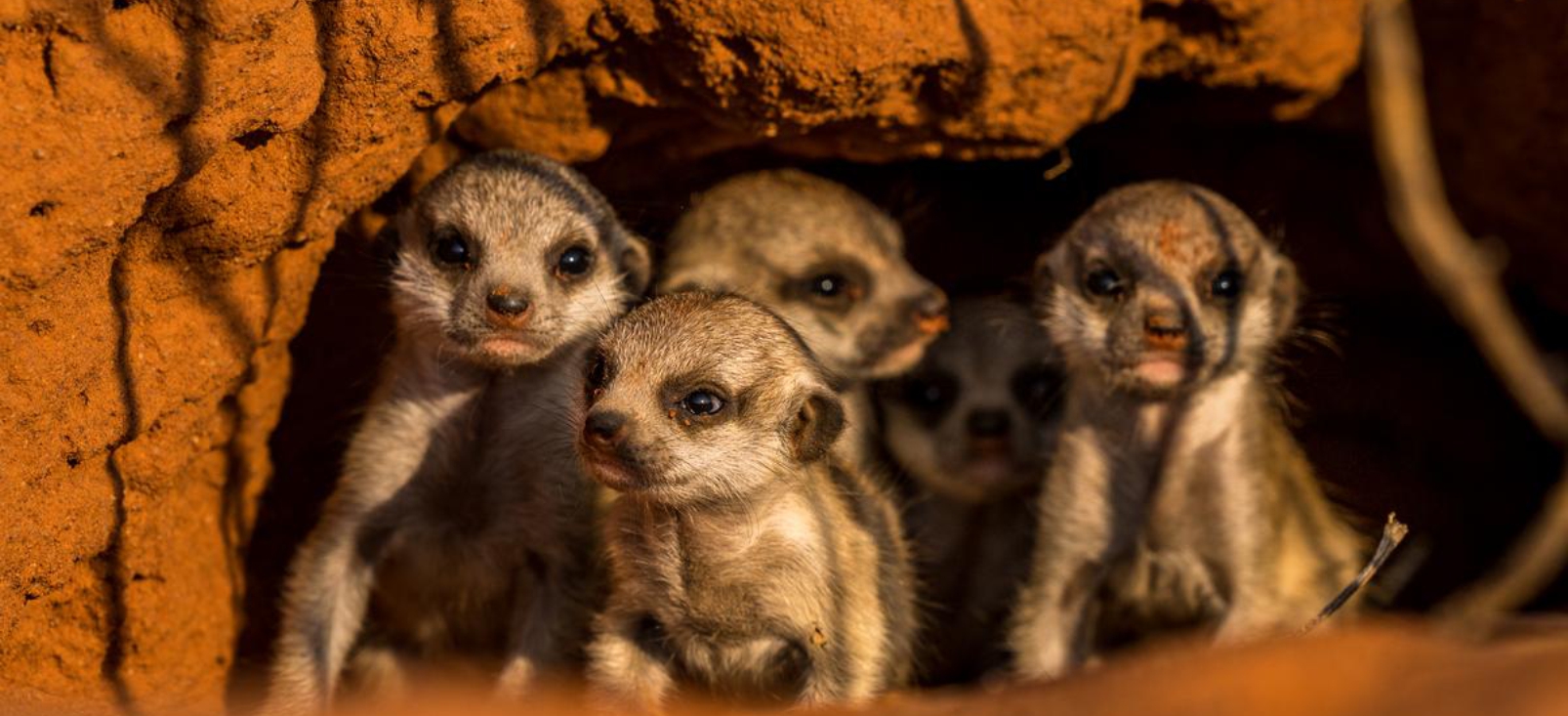
Meerkat burrow systems
Those who have spent time with Tswalu’s habituated meerkats will have visited them in the morning when they come out of their burrow system or in the evenings when they return to it after a day of foraging. These little charismatic animals certainly have perfected the use of burrows for rest, thus protecting themselves from the elements and most predators. If you took the time to observe not only their short-term morning or evening routine, however, but also asked the guides about their movements throughout a month, a year, or even several years, you will probably have heard that meerkats have not only one, but several burrow systems within their home range. Among them, they tend to favour large sleeping burrows positioned near the centre of their ranges.
This preference makes perfect sense if one considers that a burrow close to the centre of one’s range allows for more options when it comes to choosing the direction of movement for feeding, as well as being the safest spot within the home range when it comes to territorial interactions. Moreover, a large system has more escape routes should they become necessary.
However, using the same burrow system all the time can be an issue. Firstly, it can deplete food resources in its immediate vicinity. Secondly, it is predictable. On several occasions, those observing one of Tswalu’s habituated meerkat groups have watched them return from afternoon foraging to find a predator, such as an African Wild Cat, sitting hidden in a bush next to the burrow system waiting to pounce on its prey. Thus, the smaller, peripheral burrow systems are also important and are usually used in response to short-term conditions such as perceived predator threats or if the alpha female struggles to feed herself sufficiently.9
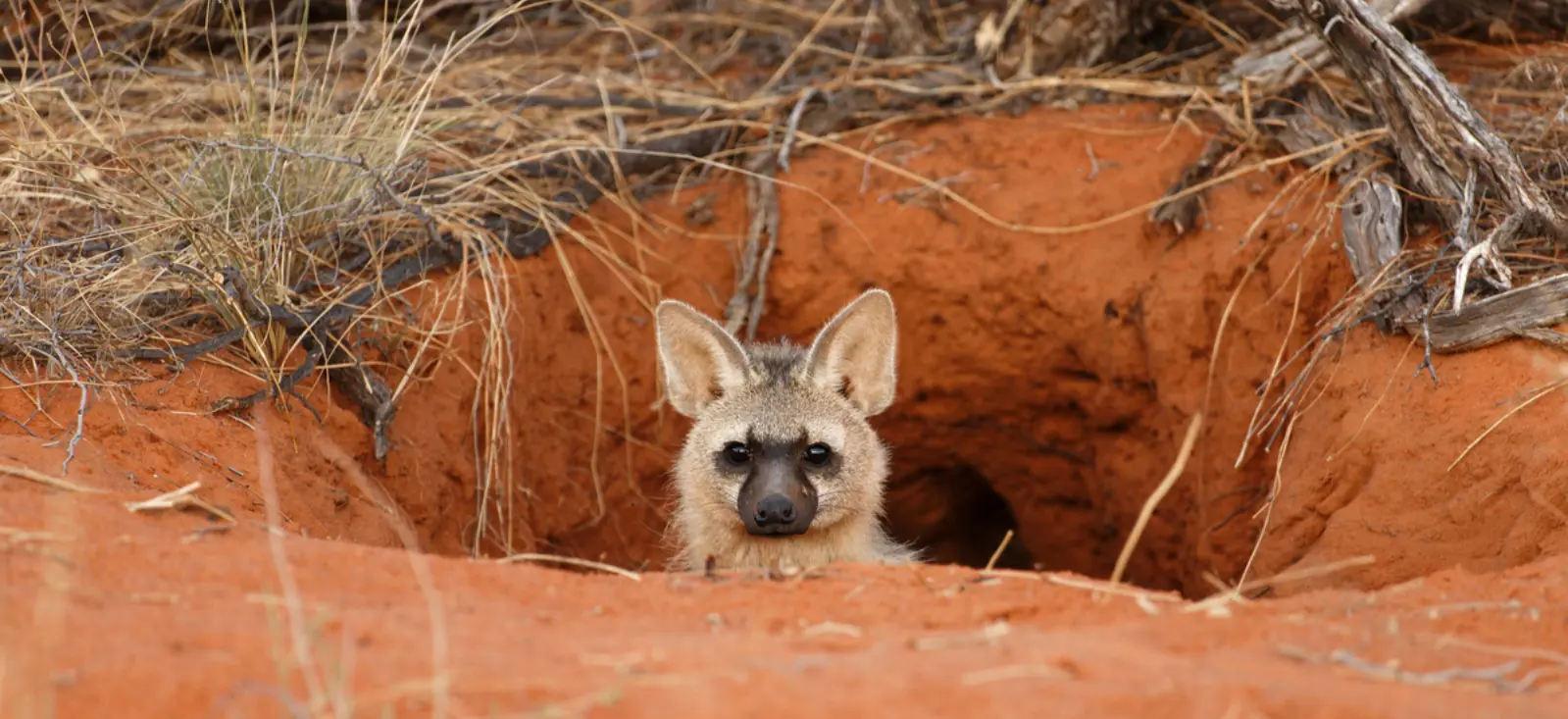
The Aardwolf borrows its burrows
The highly secretive aardwolf, despite consuming ants and termites, does not have the tools required for digging through soil and termite mounds effectively. Its size, however, allows it to make use of burrows to escape the thermal stresses of the environment it inhabits.
Aardwolves make use of spring hare burrows in particular, where they enlarge the entrance tunnel, but keep the den itself nice and small, barely altering its original size. The narrow, almost restrictive, nature of this ‘sleeping chamber’ means that less heat is lost and the space warms up quicker with the inhabitant’s body temperature, a quality that becomes vitally important in winter.
The aardwolf feeds mainly by lapping up foraging termites off the soil surface with its tongue. In winter, however, its ectothermic (cold-blooded) prey spends minimal time above ground due to the cold. Thus, winter months are a particularly stressful time of year for aardwolves and they, contrary to many other nocturnal insectivores, spend more time in the relatively thermally stable environment of their den than they do in the summer. In this way, they waste less energy trying to stay warm and this in turn allows them to survive the winter despite minimal food intake.2
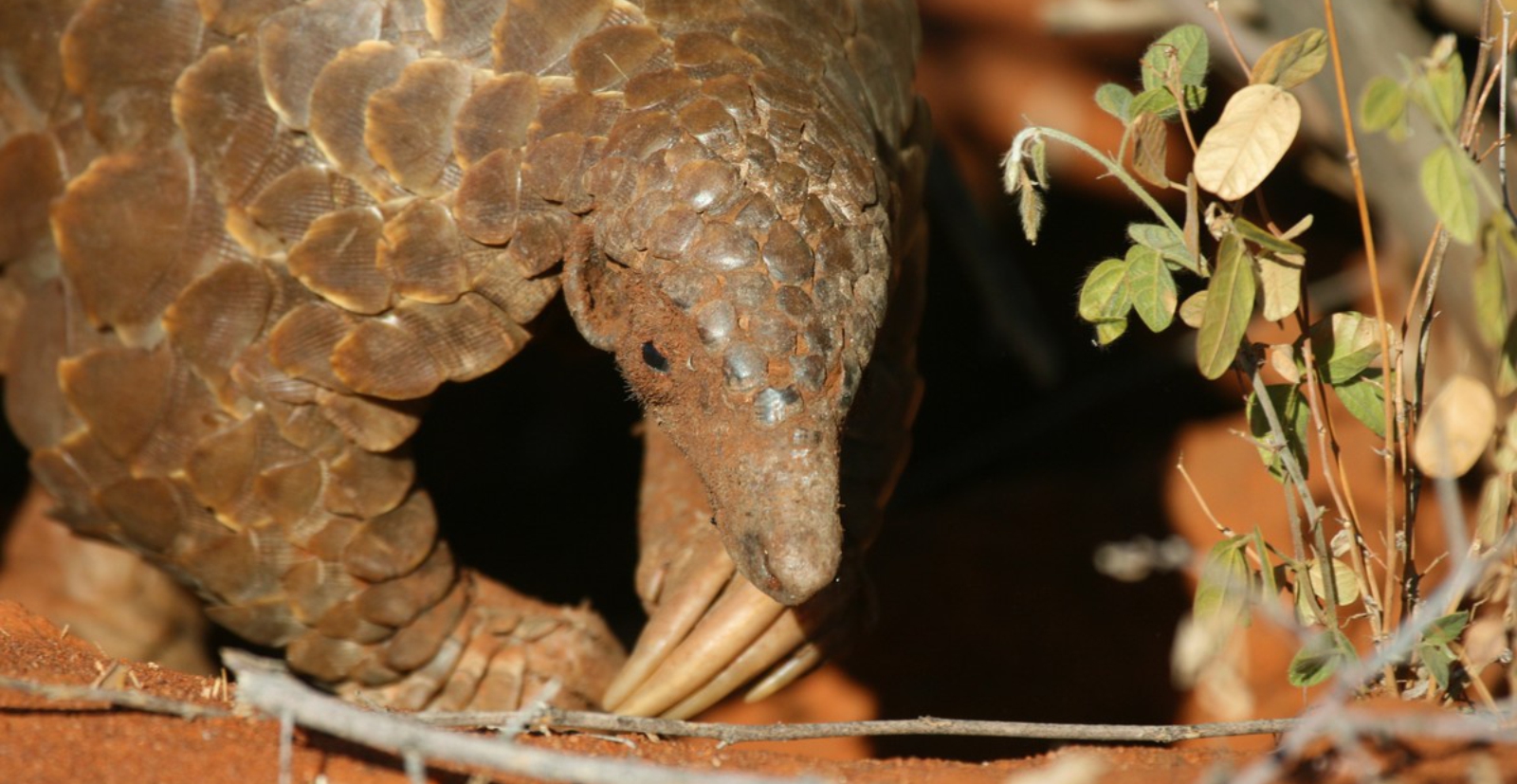
Burrows buffer temperature extremes for pangolins
Pangolins are another extremely shy and fascinating animal about which little is known. What we do know is that when they struggle to find sufficient food, they are surprisingly inefficient in regulating their body temperature for a mammal (supposed to be endotherms, or warm blooded). This means that their body temperature fluctuates quite a lot if they are exposed to temperature extremes. In drought conditions, therefore, burrows become vitally important as a space for them to spend the inactive part of their day, where temperature extremes are buffered and fluctuations almost non-existent compared to the outside world. When conditions are less extreme and food resources plentiful, the burrow’s primary role becomes that of protection from predators, with its thermal qualities being an added comfort.12
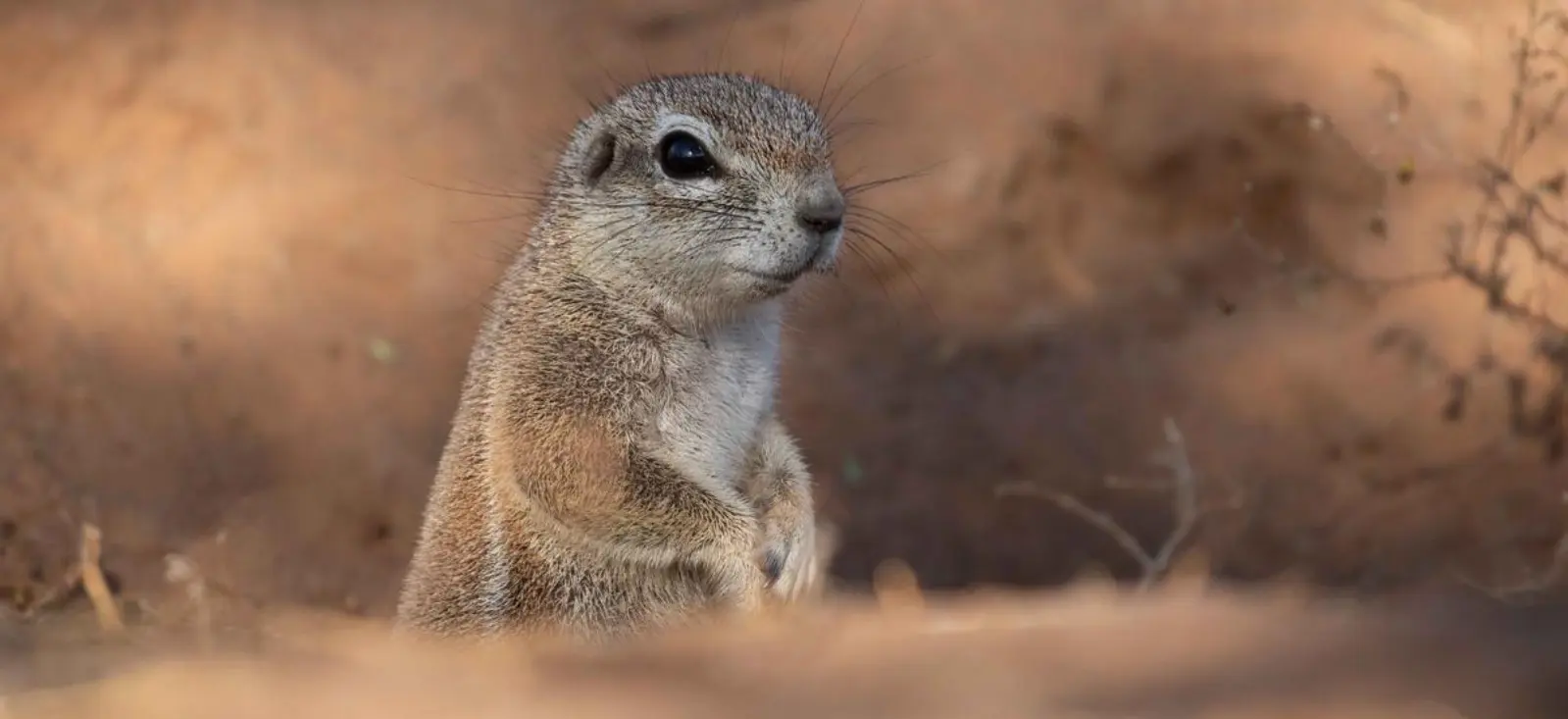
Clever, burrowing Cape ground squirrels
Cape ground squirrels usually dig their own burrow systems. In the winter, their burrows provide them with adequate protection from the extreme cold at night. Furthermore, there seem to be indications that the food (mostly seeds and roots) they store in the more humid environment of the burrow system absorbs some of that humidity, allowing for higher moisture intake by the animals – another clever adaptation to a dry environment! Ground squirrels do not waste energy unnecessarily, however, and have been found to use shallower burrows as summer retreats, when all they need is protection from predators and perhaps some cooler sand to get away from the hot surface they have been dealing with throughout the day.4
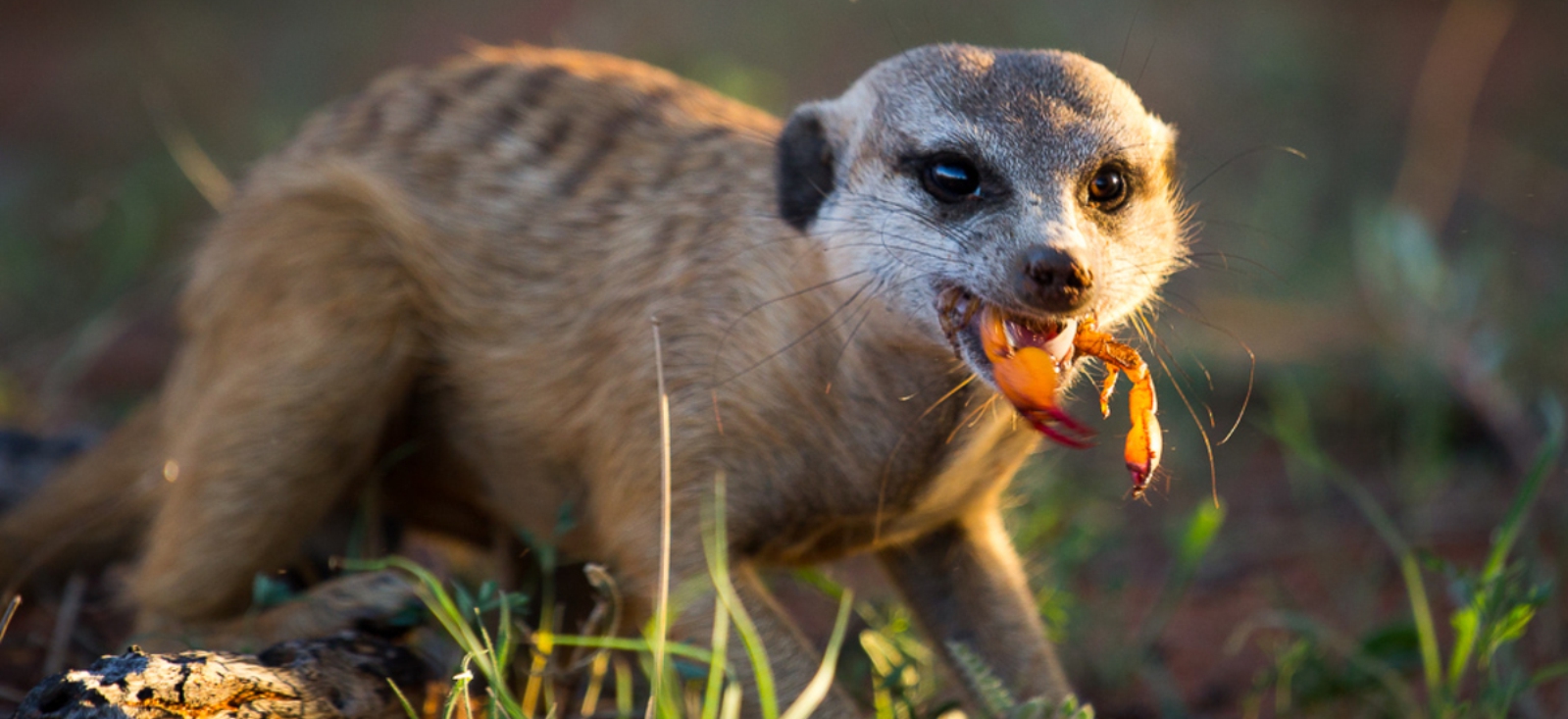
Burrows are ideal for ectotherms
Non-mammalian users of the underground world include snakes, scorpions, and spiders, mainly to avoid the desiccating heat or the freezing cold. For insects, arachnids and reptiles, all of which are ectotherms (their body temperature is regulated by the temperature of their immediate surroundings), both excessive heat and cold are highly dangerous: soaring temperatures will lead to over-heating and desiccation, while cold temperatures will lead to vulnerability to predators as the animal’s metabolism, reaction time and ability to move are drastically reduced.
Snakes, for example, spend most of the winter hiding in burrows, coming out only on warm days to soak in a little sunshine. And even at the peak of their activity in the summer, they often use their underground network at any sign of danger or if they need to rest for prolonged periods such as, for example, when digesting a large meal.
Most scorpions are nocturnal and they, too, spend most of their days underground in little burrows. Meerkats will frantically dig out scorpions once they have discovered the entrance to one of their hiding places.
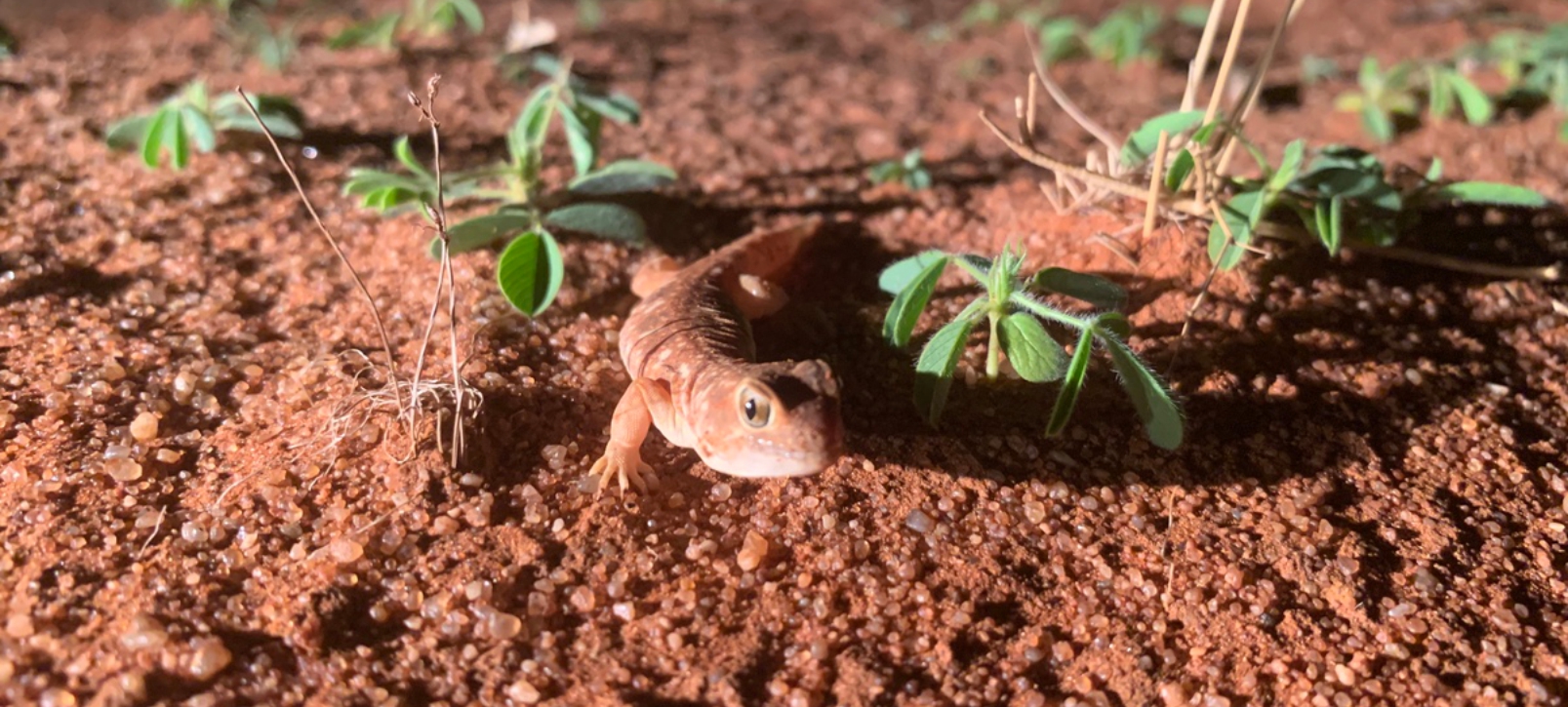
Barking geckos serenade from their burrows
Finally, in the summer, a typical and wonderful sound heard around sunset is that of barking geckos, which stand at the entrance of their burrows and call out for any potential mates and to display their territory. Their burrows are quite extensive and can be up to a metre (three foot) long – relatively big for an animal that measures a mere four centimetres, or less than two inches, from snout to vent. As protection against both heat and predators, barking geckoes usually plug their burrow entrance during the day. In the evening, they open it up again to allow for hunting (mostly ambush predation from that very same entrance) and calling.6 It is amazing how they use that tunnel entrance as an amplifier in their vocal communication, adding a further function to the structure of their living space.
Author’s note: Helen Mertens drew on the expertise of Grace Warner and Wendy Panaino while researching this story.
Bibliography:
1Anderson, A.O. and D.M. Allred, 1964, “Kangaroo rat burrows at the Nevada test site.”
2Anderson, M.D. and P.R.K. Richardson, 2005, “The physical and thermal characteristics of aardwolf dens.”
3Butynski, T.M. and R. Mattingly, 1979, “Burrow structure and fossorial ecology of the springhare Pedetes capensis in Botswana.”
4Kinlaw, A., 1999, “A review of burrowing by semi-fossorial vertebrates in arid environments.”
5Louw, M.A., N.S. Haussmann and P.C. le Roux, 2019, “Testing for consistency in the impacts of a burrowing ecosystem engineer on soil and vegetation characteristics across biomes.”
6Marais, J, 2007, A Guide to the Reptiles of Southern Africa.
7Mviha, P.J.Z., J. Holt and S.V. Green, 2021, “Armoured Bush Cricket Acanthoplus discoidalis outbreak prediction using rainfall patterns in three zones of Botswana.”
8Riddell, E.A. et al., 2021, “Exposure to climate change drives stability or collapse of desert mammal and bird communities.”
9Strandburg-Peshkin, A., T. Clutton-Brock and M.B. Manser, 2020, “Burrow usage patterns and decision-making in meerkat groups.”
10Whittington-Jones, G.M., R.T.F. Bernard and D.M. Parker, 2016, “Aardvark burrows: a potential resource for animals in arid and semi-arid environments.”
Images by Marcus Westberg, Wendy Panaino and Barry Peiser.

